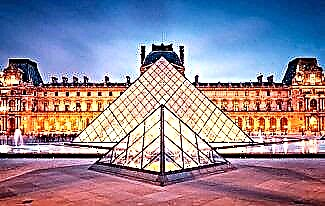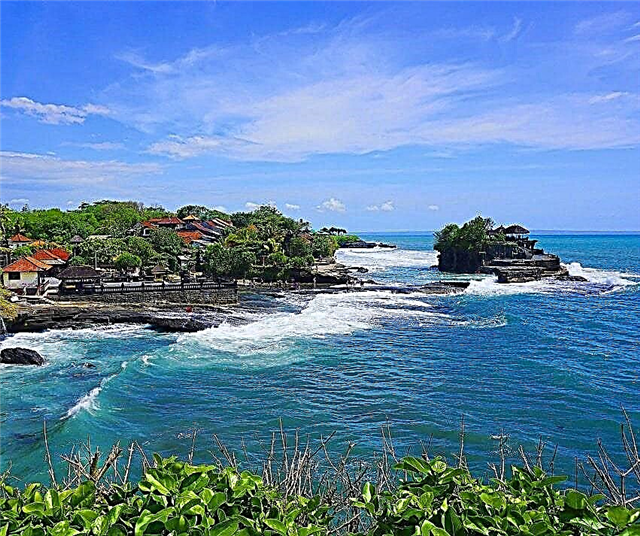Today, iron is in demand in various spheres of human life. Iron is used to create support structures, appliances and household items. Unfortunately, iron is afraid of the negative effects of moisture, so its surface is coated with a special solution or processed. Next, we suggest reading more interesting and exciting facts about hardware in order to usefully spend your free time.

1. Iron is a silvery white metal.
2. There are no impurities in iron, so it is a rather ductile metal.
3. This metal has magnetic properties.
4. Iron loses its magnetic properties when heated.
5. Only in a few places is this metal found in its pure form.
6. Iron deposits can be found in Greenland.
7. The composition of hemoglobin contains iron.
8. In the human body, iron provides gas exchange processes.
9. This metal is fully soluble in acid.
10. Galvanized sheets are made from pure iron.
11. To combat anemia, iron supplements are used.
12. To make the material more durable, the iron is first kindled to a red color.
13. Steel is an alloy of carbon with iron.
14. Cast iron is another material that comes from iron and carbon.
15. “From the sky” iron fell into the hands of the first man.
16. Meteorites contain a fairly large amount of iron.
17. In 1920, the most iron meteorite was found.
18. Iron enters the human and animal body with food.
19. Eggs, liver and meat have the highest iron content.
20. The core of our planet consists of an alloy of iron.
21. Iron was found on the moon in free form.
22. Nettle contains a high iron content.
23. In America, during the war years, they were forced to fortify flour with iron for the military.
24. From about 1000 to 450. BC e. the Iron Age continues in Europe.
25. Only representatives of the nobility in Europe had the right to adorn themselves with iron products.
26. In ancient Rome, rings were made of iron.
27. During archaeological excavations, the first iron products were found.
28. Meteorite iron was used in the manufacture of ancient products.
29. The first iron articles were found in the II-III centuries. BC. in Mesopotamia.
30. In Asia, the production of iron products spread in the middle of the 2nd century BC.
31. The leap in the production of metal devices took place in the XII-X centuries. in Asia Minor.
32. The Iron Age is the period of mass production of iron items.
33. The cheese-blowing method was the main method of producing iron in ancient times.
34. To make iron more durable, it was additionally kindled with coal.
35. With the development of iron, people learned to make cast iron from it.
36. The production of iron products began to develop in China since the 8th century BC.
37. The second metal after aluminum is iron, the most widespread in the world.
38. More than 4.65% by mass in the earth's crust is the content of the chemical element iron.
39. In its composition, iron ore contains more than 300 minerals.
40. Up to 70% can be iron content in industrial ores.
41. Iron ore dissolves in most dilute acids.
42. Iron is used for the production of electromagnetic stations.
43. Iron is easily magnetized at room temperature.
44. At a temperature of +800 degrees Celsius, the magnetic properties of iron are lost.
45. Iron can be forged.
46. Iron is made more wear-resistant in the forging process.
47. Iron ore deposits are divided into three groups by origin.
48. Iron can easily enter into various chemical reactions.
49. Iron easily reacts with carbon, phosphorus or sulfur.
50. Iron is capable of oxidizing on contact with humid air.
51. A malleable iron alloy is steel.
52. Typically, steel is hardened to improve its mechanical properties.
53. Steel has the same chemical properties as iron.
54. Steel is used for the production of weapons and tools.
55. Cast iron is an alloy of carbon and iron.
56. Cast iron is used in steelmaking.
57. From the time of the settlement of the Aryan tribes, iron products were already known.
58. Iron was more valuable than gold in antiquity.
59. From lat. sidereus - stellar, the name of natural iron carbonate comes from.
60. Large quantities of iron ore have been found in space on other planets.
61. Under the action of salt water, iron rusts faster.
62. Iron is afraid of exposure to water and other negative environmental factors.
63. Iron is the sixth widespread metal in the world.
64. In ancient times, items made of iron were placed in a gold frame.
65. Iron was produced in Egypt since the second millennium BC.
66. The strongest was formerly the iron of all known metals.
67. In Asia and Europe, at the beginning of our era, iron products were already being produced.
68. Meteorite iron used to be very rare and expensive.
69. An ancient column in India is made of pure iron.
70. A person starts to get sick if the body lacks iron.
71. Apples and liver are rich in iron.
72. Iron is essential for the normal life of all living beings on earth.
73. In the modern world, iron is widely used to create household items.
74. With the help of iron, weapons were produced that helped in fierce battles.
75. A sufficient amount of iron in the body can lead to disease.
76. Pomegranate contains enough iron for a person's daily requirement.
77. No living organism can survive without iron.
78. In the modern world, there are a lot of sayings about iron.
79. Most of the world's bridges are made of iron.
80. Iron is a part of modern metal structures.
81. There was a time when almost all the inhabitants of the earth hunted for iron for the purpose of profit.
82. Horseshoes for a horse are made of iron.
83. In ancient times, it was considered the happiest amulet made of iron.
84. In Western Asia, a method of making iron was invented.
85. The Iron Age replaced the Bronze Age in Greece.
86. Iron is created with the help of charcoal.
87. A special process for smelting iron was invented in the 20th century.
88. Iron can exist in the form of two crystal lattices.
89. A small amount of iron is obtained by electrolysis of aqueous solutions of its salts.
90. Currently, the word "iron" has become widely used in various aphorisms.
91. All pregnant women are advised to consume iron in the form of preparations or foods.
92. Iron is used to create materials that can withstand high temperatures.
93. Iron was widely used in ancient India.
94. Food for blood and immunity is food rich in iron content.
95. With the physiological capabilities and age of a person, the body's need for iron changes.
96. The melting point of iron is 1535 degrees Celsius.
97. Essential medicines contain iron.
98. The greatest absorption of iron into the baby's body occurs through breast milk.
99. Even chickens get anemic if iron is not enough.
100. Various diseases of the stomach are provoked by the lack of iron in the body.









